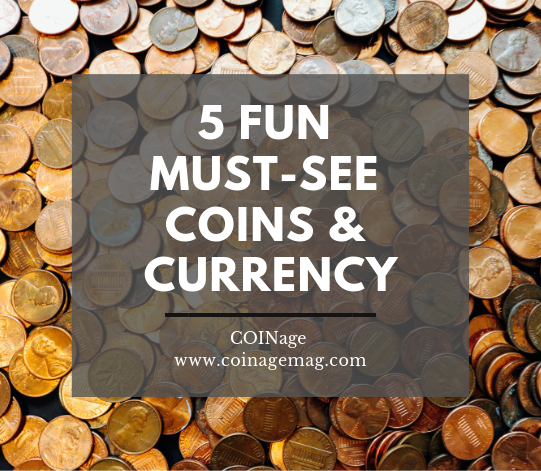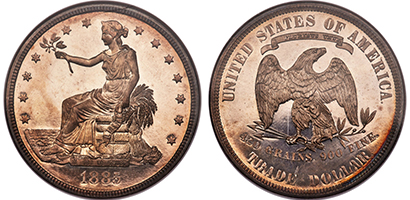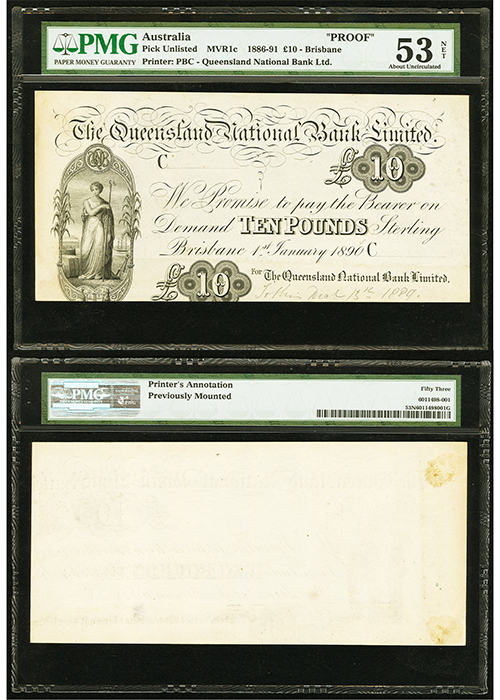
By Antoinette Rahn
64 – 1,500 – 15,000.
Separately these three groups of numbers represent a wide variety of things. Together in the context of numismatics and January they speak of longevity, breadth and depth, and influence of the Florida United Numismatics Convention, otherwise known as the FUN Show.
The 2019 FUN Show, which is already underway (it began Jan. 10), marks the 64th year of this premiere numismatic show. 1,500 represents the minimum number of vendors/dealers who attend FUN, offering a myriad of coins and currency. And finally, 15,000 is the average minimum number of people who attend FUN each January.
Although I realize for some people there is nothing, absolutely nothing, ‘fun’ about numbers, but I have one more figure to share: 3,953. This is the number of lots of U.S. and world coins and currency slated for presentation by Heritage Auctions during its FUN Show auction series. That is a lot of lots and a lot of potential for auction excitement. With that, I thought I’d take a look at five notable numismatic items in this series of auctions.
The first round of FUN Show auction action is in the books already, so we’ll start things with a couple examples of news-making SOLD lots.

1885 Trade Dollar, PR66
Presented for auction Jan. 10, 2019 by Heritage Auctions.
Sold for $3,960,000
There are a lot of mysteries (some folklore too) in numismatics, but this coin is a grand example of numismatic mysteries. As the fine folks at Heritage Auctions describe this coin in the auction catalog description, “The 1885 Trade dollar is one of the rarest and most enigmatic issues in all of American coinage.”
With only five (yes, just five) known examples of this coin in existence, very few records of the coins being exhibited, no mention of the coins in the U.S. Mint’s records for the year of 1885, no examples appearing in the reputed coin collections of the ANA, ANS, or the Smithsonian, and this being only the third time this particular Trade dollar has come to auction, it’s safe to say this coin is uncommon and special.
There is a lot more to this story, which is why I encourage you to visit Heritage Auctions’ site to read the lot description in its entirety >>>
1943 Bronze Lincoln Cent, AU53
Presented for auction Jan. 10, 2019 by Heritage Auctions.
Sold for $204,000
Another featured lot in the opening session of Heritage’s FUN Convention series of auctions was a 1943 Bronze Lincoln Cent. This cent is the focus of one of my favorite stories in numismatic history. At the time this coin was struck the world was in the throes of World War II and the U.S. government and its residents were working to make sure there was a steady supply of material needed to create the equipment needed for the war. This meant U.S. cents would be made of zinc-coated steel instead of the traditional copper.
A small segment of cents were mistakenly made from bronze blanks (planchets) at the end of 1942, resulting in these “copper” cents entering in circulation amidst an avalanche of “steel” cents. Once word got out that these uncommon “copper pennies” were in circulation the rumor mill started to hum, and there was talk of Henry Ford offering to present a new car to anyone who found one of these unusual coins and brought it to him. Sounds like a sweet deal, right? Like most rumors the Ford story was all talk and no truth.
However, at the time people didn’t know that for certain and the search for the illusive “copper pennies” was on. Sounds a bit like that story about the candy maker, the little boy, and the golden ticket, doesn’t it? Man, I really loved that movie. Wallpaper made of candy, and those adorable Oompa Loompas make me smile. But, I digress.
The point of recapping the ‘copper pennies’ path to circulation was to say the 1943 copper cent that sold in this auction was the very coin discovered by a then teenage boy, Don Lutes, Jr. After doing some research and finding out the ‘penny-for-a-Ford’ deal was just a tall tale, Lutes decided to keep the coin in his own collection, according to information reported by Heritage Auctions. A sad point to this story is that Mr. Lutes passed away in September of 2018, and thus, was not able to see his special find make its inaugural appearance at auction and command $204,000. Learn More >>>
Government of Belize 10 Dollars, PMG Superb Gem Uncirculated 68 EPQ
To be presented for sale Jan. 14, 2019 by Heritage Auctions.
Estimate: $800-$1,000
I chose this note for the simple fact that I think it is beautifully designed and has an impressive grade ranking. Issued in January of 1976 it possesses a grade of 68 EPQ from PMG.
The grade is based on the 70-point Sheldon grading scale So at 68 this $10 Belize note is a high-ranking example. The definition of the 68 EPQ ranking, according to the PMG site, is “The margins and registration are slightly off center. There may be very minor handling.”
This particular note comes to auction being one of four examples tied for finest graded Belize $10. Plus, the note hails from the Feeling Good Collection. That fact alone makes me smile. Learn More >>>
1935-Dated Washington Quarter, AU58, PCGS
To be presented for sale Jan. 11, 2019 by Heritage Auctions.
Current Bid: $2,200
Another incredibly fascinating subject in numismatics, in my humble opinion, is error coins. Over the years I’ve thoroughly enjoyed perusing the details in various editions of “Strike It Rich With Pocket Change” by Ken Potter and Brian Allen and published by Krause Publications, and “The Cherry Pickers’ Guide to Die Varieties,” by Bill Fivaz and J.T. Stanton and published by Whitman Publishing.
This error caught my attention as I don’t know if I’ve seen an indent like this on this age of coin. The error is created by a dime planchet indented on the reverse of this Washington Quarter, as explained in the lot description. The indent is quite significant, rise from the 6 o’clock point to the top of the eagle’s head.
I’m impressed that in numismatics errors are celebrated, instead of criticized or disregarded like is so often the case within society when discussing ‘mistakes.’
Learn More >>>
1890 Queensland National Bank Limited 10 Pounds, MVR1c, Proof PMG About Uncirculated 53 Net
To be presented for sale Jan. 14, 2019 by Heritage Auctions.
Current Bid: $5,000-$7,000
I think there is a trend in this column, mysterious, error, and now elusive. I feel like we’re covering some of the rebels of numismatics – but then again, I guess that’s what makes them FUN, right? At least in my experience ‘rebellion’ has often been fun, but again, those are stories for another day.
In addition to being an elusive type of denomination, as explained by the lot description, issued in Brisbane, Australia, I think the elegance of this note is what drew me to it. The word ornate is used quite often in the antiques and collectibles world, but I think the script on this note qualifies as ornate as well. In my opinion it is another example of the artistry that is ever present in numismatic offerings.
Learn More >>>
FUN TIP: If you are like me, and unable to make the trip to experience FUN in person, you can still enjoy the action taking place during Heritage Auction’s series of auctions by tuning into Heritage LIVE. You can enjoy live streaming audio and video from the auction block as lots are presented and bidding takes place. It’s quite a time!
















These are just so beautiful! I have a weakness for the American Eagles, I just bought some of the 2019 https://bullionexchanges.com/2019-1-oz-silver-american-eagle-coin. Thanks for this!